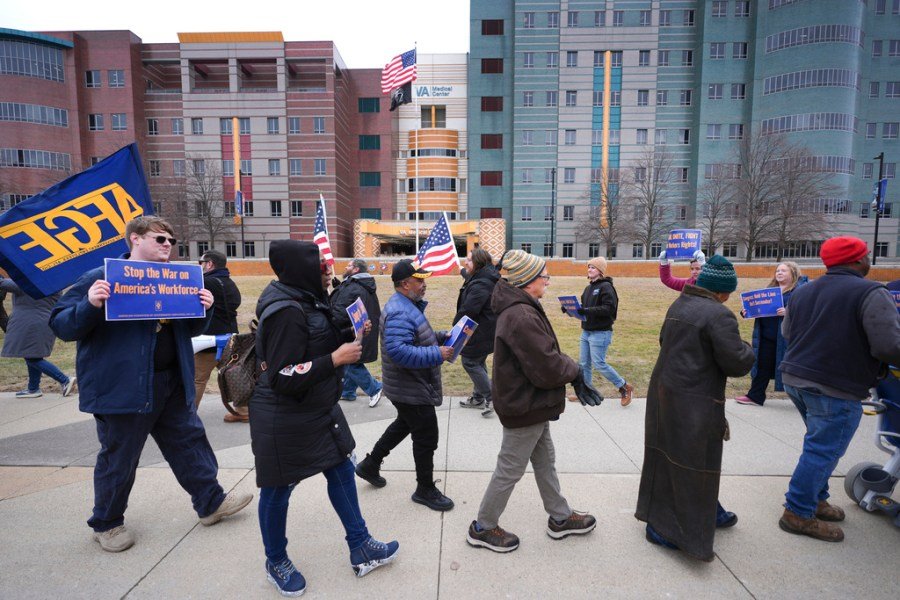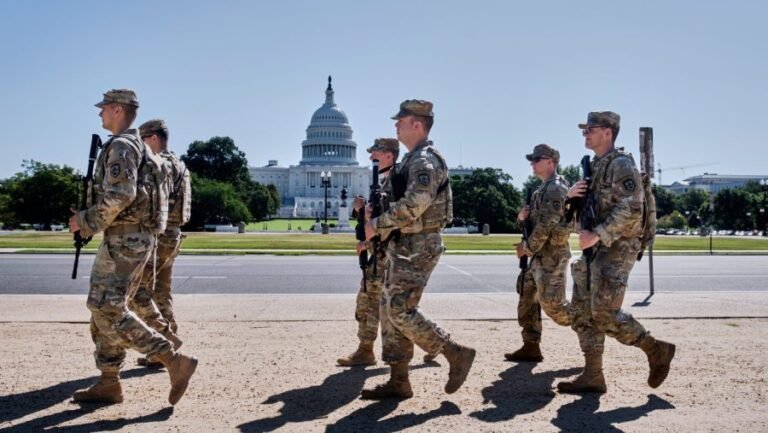
Labor Day 2022 seemed to me “the most promising moment for unions in several decades.” That year, young workers were trying to organize new unions from coast to coast, and labor unions enjoyed over 70 percent popularity for the first time in 60 years.
But union density only continued to fall. By 2024, unions represented, for the first time in over a century, fewer than 6 percent of private sector workers.
Unions are still popular, but the unusually hopeful union days of 2022-2023 now seem light years away.
In the first six months of 2025, the Trump administration has ripped a gaping hole in the heart of the labor movement, exposing its vulnerability to anti-union executive orders, corporate hostility and right-wing populism. Following the playbook of Project 2025, President Trump has issued executive orders stripping collective bargaining rights from over 800,000 federal workers, the biggest single union-busting act in U.S. history.
In a first-ever, he has fired, for no cause, Democratic members of the National Labor Relations Board and Federal Labor Relations Authority and has taken dozens of other sweeping actions undermining decades-long worker rights and protections.
Every week brings a barrage of attacks on working people: undocumented workers, transgender workers, farm workers, homecare workers, scientific researchers, public media workers, teachers, creative workers and others. Corporations such as Amazon and SpaceX, meanwhile, have continued their attack on not only workers’ right to organize but also against the constitutionality of the 90-year-old National Labor Relations Board itself.
It would be a mistake to assume that the U.S. labor movement is united in opposition to the Trump agenda. Several unions, including the Teamsters, UAW, International Longshoremen’s Association, and building trades, have welcomed some parts of Trump’s economic nationalism, and many of their members voted for Trump.
Unlike most traditional Republicans, right-wing populists like Vice President JD Vance, Secretary of State Marco Rubio, and Missouri Sen. Josh Hawley don’t want to destroy unions like the Teamsters, steelworkers and the building trades; rather, they want to co-opt them. Influenced by right-wing thinker Oren Cass, they believe that the members of these unions are often more conservative than the leadership of the unions. The ability of right-wing populism to divide the U.S. labor movement should not be underestimated.
How can unions fight back against these existential threats? The labor movement has arguably become too dependent on support from federal or state governments for survival. Trump’s sweeping executive order removing collective bargaining rights from federal workers and his other actions reveal a deeper vulnerability: Unions, like research universities (with whom Trump is also at war) have grown too dependent on government finances and patronage.
U.S. private sector union membership fell below 6 percent in 2024 for the first time in over 100 years. But a century ago, the labor movement had a more solid foundation than it does today — robust unions were based in trades and were used to surviving during periods of government hostility. The Trump administration has concentrated political power in the hands of the president in a way not seen for decades, and unions are finding out that those who live mostly by politics can also die by politics.
I have long believed that it would take something big to change in the U.S. labor relations environment to open an opportunity for unions to grow in a meaningful way, like they last did in the 1930s. And the current political and constitutional crisis is “something big.” We don’t yet know how Trump’s attack on the Constitution is going to play out, but his firing of members of the National Labor Relations Board and other government agencies, and his attack on the collective bargaining rights of federal workers, are arguably right up there with these illegal acts. Pure power plays, so to speak. If Trump succeeds politically, labor’s prospects are dim.
But his success is far from certain and if Trump’s power grab implodes, more may be in play for the labor movement that has been true for many decades. Part of the problem has always been that labor law reform is too parochial an issue — a black box, so to speak, which only insiders understand. But that could change.
U.S. politics is unpredictable right now, in a state of unusual flux. Unions and their allies could yet come out of this crisis with a much stronger shot at transformative labor law reform. But the labor movement must go on the offensive — playing by the old rules will not be enough to save it.
Ironically, the challenge to the constitutionality of the National Labor Relations Board may open an opportunity for labor. The Supreme Court will almost certainly uphold last week’s decision from the 5th Circuit in favor of SpaceX’s constructional challenge, but this doesn’t threaten the actual law; it simply means that the National Labor Relations Board would be more under the thumb of the executive, which in Trump’s case, would obviously be bad for labor.
But it would only take an amendment to the National Labor Relations Act to bring it into conformity with the court’s decision, and this would present union advocates an opportunity to rethink the law. It’s not clear that today’s labor establishment can rise to this challenge, but the future of unions may well depend on it.
John Logan is professor and director of Labor and Employment Studies at San Francisco State University.


